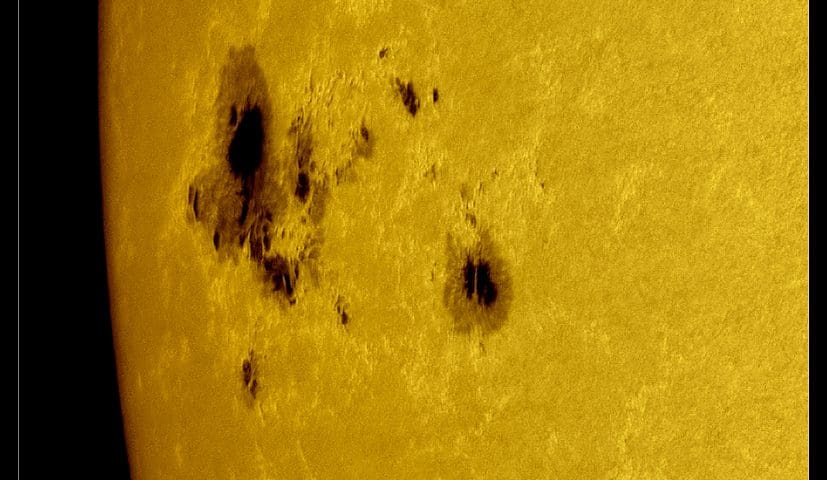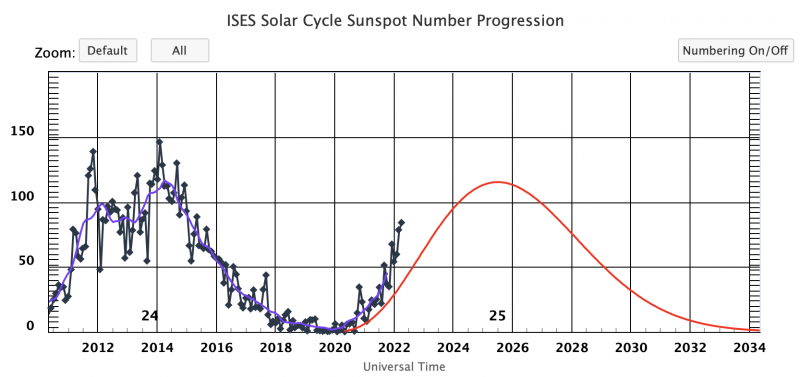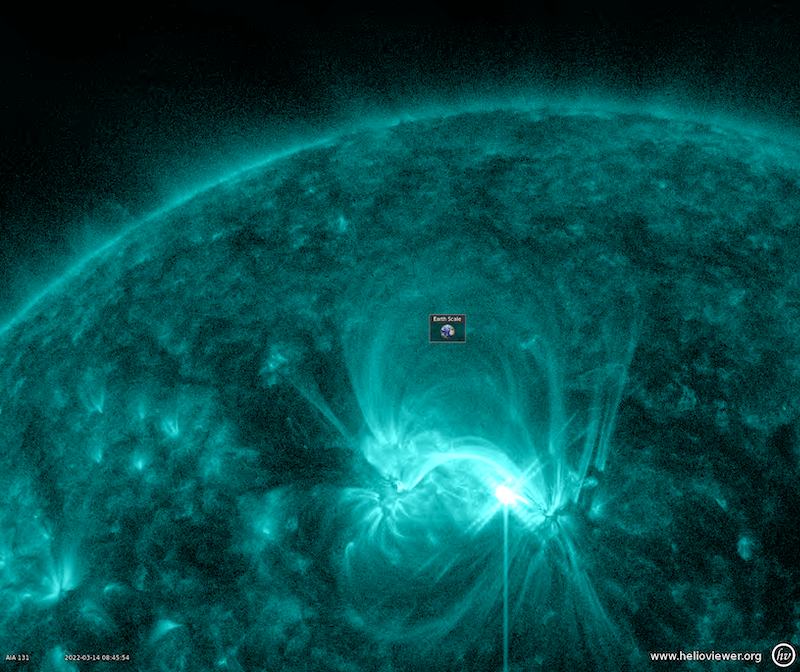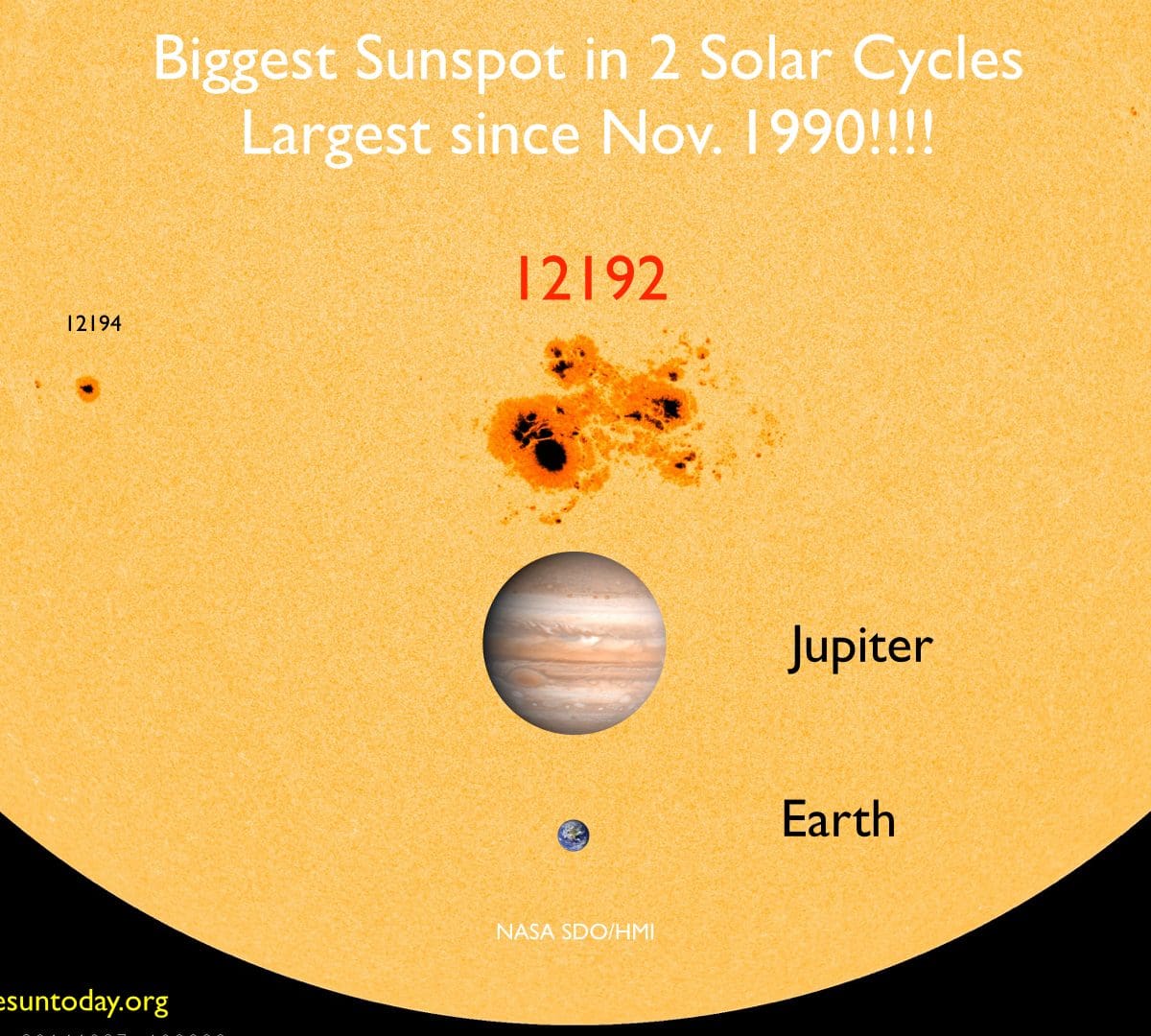

Sunspot AR1967 – Taken by Karzaman Ahmad on January 29, 2014 at the Langkawi National Observatory, Malaysia credit: Karzaman Ahmad and shared at the spaceweather.com realtime gallery.
AR11967 continues to stay lively. In less than 24 hours on Jan. 28, it produced 7 M-class solar flares. The largest flare was an M4.9 at 19:00 UT. Here is a video of composite 304, 171 and 193 angstrom SDO/AIA images from 7:15 to 20:00 UT on Jan. 28, 2014. The video is rotated so that the left or East limb of the sun is at the top of the video.
http://youtu.be/n_bPNcZ3JYY
AR11967 is finally completely on the disk allowing solar observers and forecasters to get a good look at its structure and magnetic complexity. The region was determined to have moderate magnetic complexity so flare forecasters are expecting more intermediate activity, C and M-class flares.
credit: NASA/SDO/LMSAL/Max Millennium




